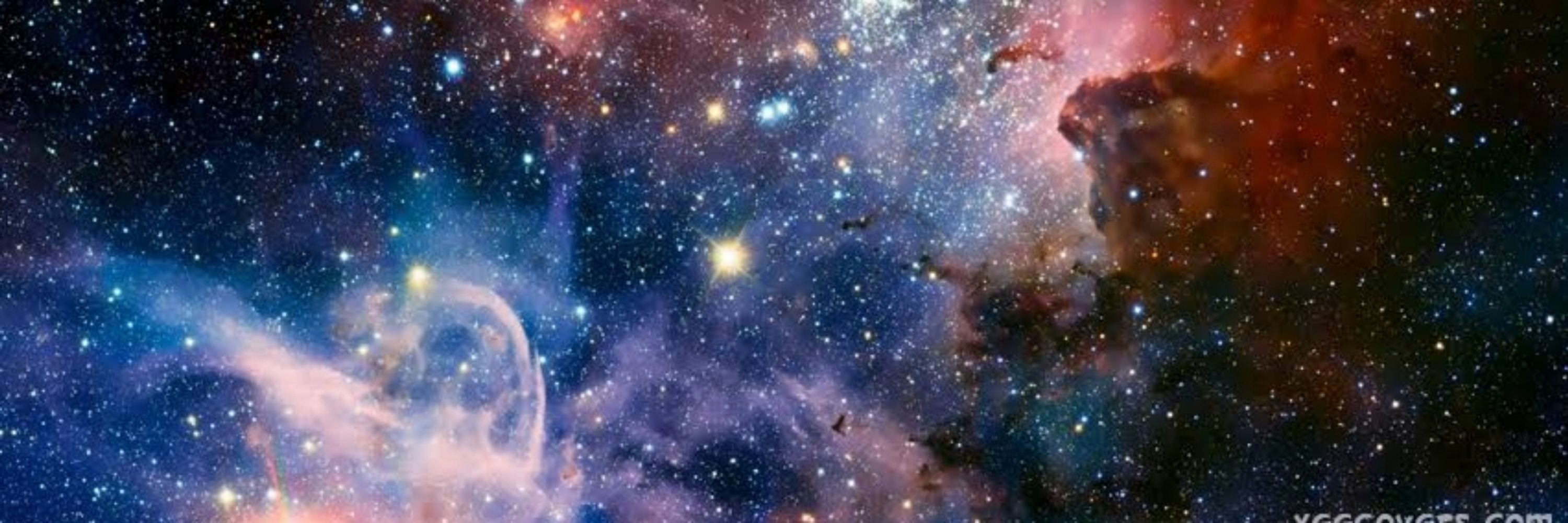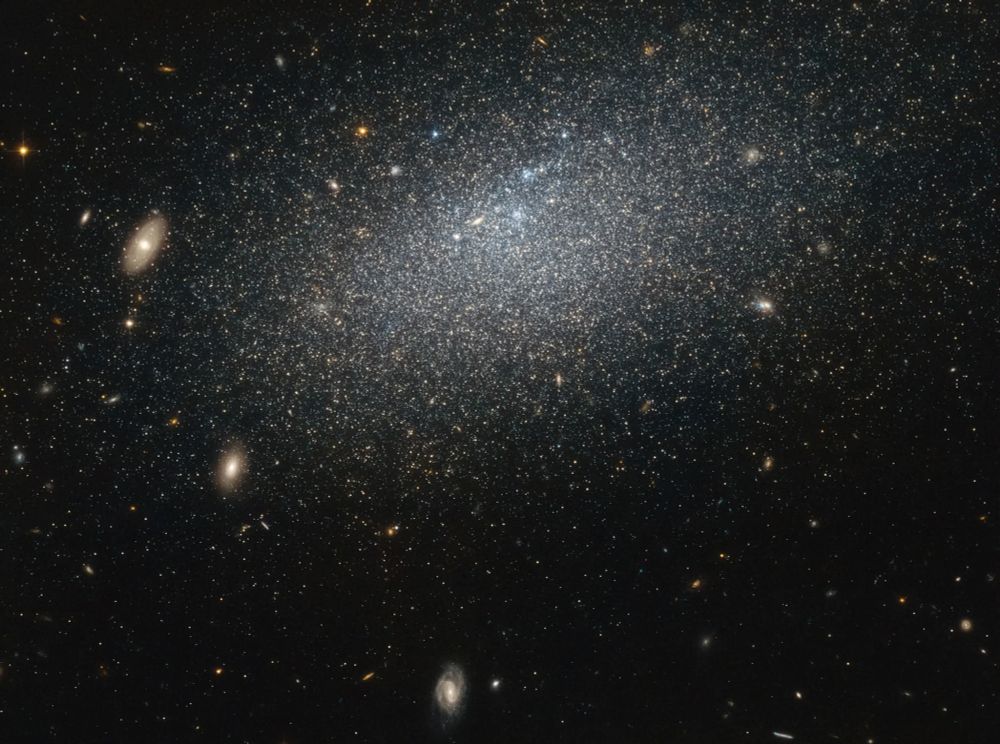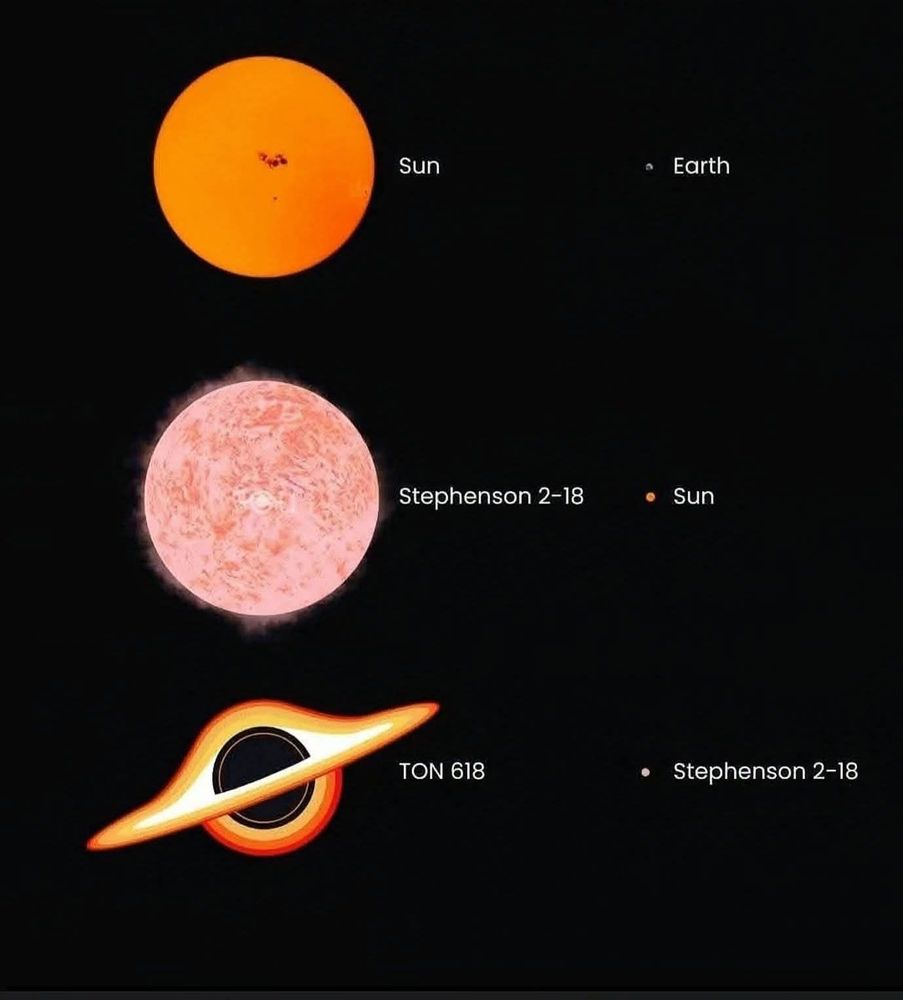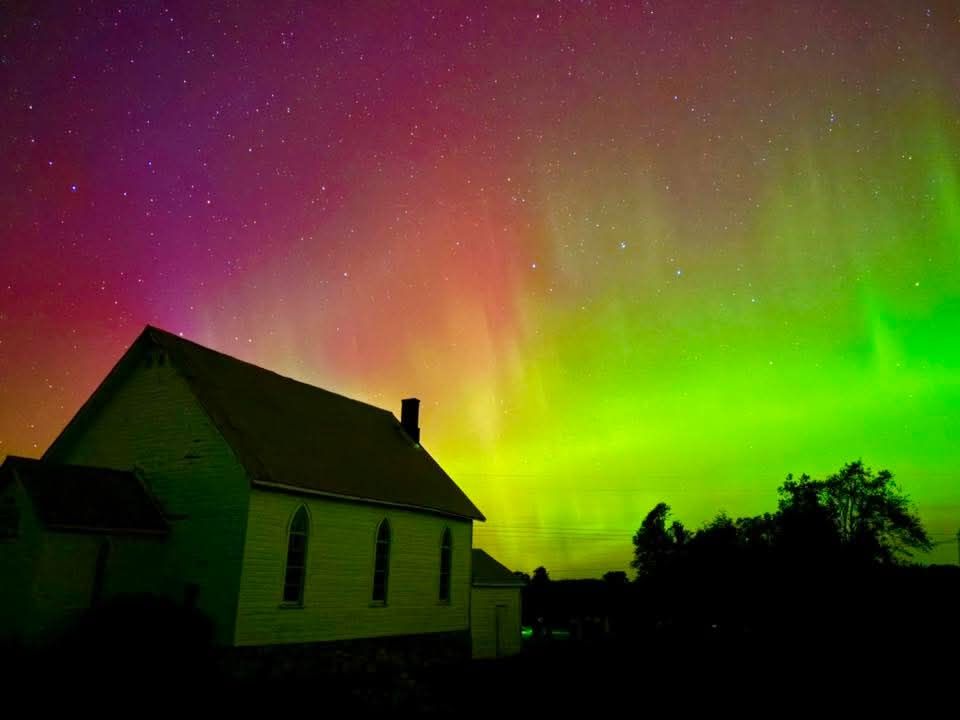
Universe
@universespace.bsky.social
Wellcome to the Universe. It includes all of space, and all the matter and energy that space contains.Earth and the Moon are part of the universe, as are the other planets and their many dozens of moons.
Extremely rare White Auroras like never before spotted in the skies of Alaska last night👀 🌌✨

November 9, 2025 at 7:16 PM
Extremely rare White Auroras like never before spotted in the skies of Alaska last night👀 🌌✨
The biggest moon of the year , shot with a 800mm lens yesterday evening above the Cunera Church in Rhenen, when it was rising behind a thin layer of clouds. The moon was about 8% bigger than normal because of its position to the earth.

November 7, 2025 at 2:41 PM
The biggest moon of the year , shot with a 800mm lens yesterday evening above the Cunera Church in Rhenen, when it was rising behind a thin layer of clouds. The moon was about 8% bigger than normal because of its position to the earth.
Constellations poster shared in Pinterest.

November 6, 2025 at 10:56 AM
Constellations poster shared in Pinterest.
UGC 4879
Classified as an irregular dwarf galaxy, UGC 4879 is a little smaller and messier than its cosmic cousins, lacking the majestic swirl of a spiral or the coherence of an elliptical.
This galaxy is relatively isolated. Its nearest neighbor is about 2.3 million light-years away!
NASA/ESA
Classified as an irregular dwarf galaxy, UGC 4879 is a little smaller and messier than its cosmic cousins, lacking the majestic swirl of a spiral or the coherence of an elliptical.
This galaxy is relatively isolated. Its nearest neighbor is about 2.3 million light-years away!
NASA/ESA

October 2, 2025 at 11:11 AM
UGC 4879
Classified as an irregular dwarf galaxy, UGC 4879 is a little smaller and messier than its cosmic cousins, lacking the majestic swirl of a spiral or the coherence of an elliptical.
This galaxy is relatively isolated. Its nearest neighbor is about 2.3 million light-years away!
NASA/ESA
Classified as an irregular dwarf galaxy, UGC 4879 is a little smaller and messier than its cosmic cousins, lacking the majestic swirl of a spiral or the coherence of an elliptical.
This galaxy is relatively isolated. Its nearest neighbor is about 2.3 million light-years away!
NASA/ESA
Messier 96 (also known as M96 or NGC 3368) is an intermediate spiral galaxy about 31 million light-years away.
Credit: ESO/Oleg Maliy
Credit: ESO/Oleg Maliy

September 25, 2025 at 1:34 PM
Messier 96 (also known as M96 or NGC 3368) is an intermediate spiral galaxy about 31 million light-years away.
Credit: ESO/Oleg Maliy
Credit: ESO/Oleg Maliy
7500 light-years away from us...

September 25, 2025 at 10:18 AM
7500 light-years away from us...
The Unimaginable Scale Of The Universe

September 25, 2025 at 5:39 AM
The Unimaginable Scale Of The Universe
It would look like our night sky if the Andromeda Galaxy were brighter...

September 24, 2025 at 1:37 PM
It would look like our night sky if the Andromeda Galaxy were brighter...
Is the universe fundamentally mathematical or just described mathematically? ✍️

September 23, 2025 at 7:23 AM
Is the universe fundamentally mathematical or just described mathematically? ✍️
Sombrero Galaxy
Constellation: Virgo
Distance: 28 million light years
RA: 12h 39m 59.4s
Dec: −11° 37′ 23″
The Sombrero Galaxy (also known as Messier 104, M104 or NGC 4594) is a peculiar galaxy of unclear classification in the constellation borders of Virgo and Corvus.
Constellation: Virgo
Distance: 28 million light years
RA: 12h 39m 59.4s
Dec: −11° 37′ 23″
The Sombrero Galaxy (also known as Messier 104, M104 or NGC 4594) is a peculiar galaxy of unclear classification in the constellation borders of Virgo and Corvus.

September 22, 2025 at 3:05 PM
Sombrero Galaxy
Constellation: Virgo
Distance: 28 million light years
RA: 12h 39m 59.4s
Dec: −11° 37′ 23″
The Sombrero Galaxy (also known as Messier 104, M104 or NGC 4594) is a peculiar galaxy of unclear classification in the constellation borders of Virgo and Corvus.
Constellation: Virgo
Distance: 28 million light years
RA: 12h 39m 59.4s
Dec: −11° 37′ 23″
The Sombrero Galaxy (also known as Messier 104, M104 or NGC 4594) is a peculiar galaxy of unclear classification in the constellation borders of Virgo and Corvus.
How we think the solar system is?

September 22, 2025 at 7:15 AM
How we think the solar system is?
Orion’s Belt Star
The three bright stars of Orion’s Belt Alnitak, Alnilam, and Mintaka are massive blue supergiants, far larger and hotter than our Sun.
The three bright stars of Orion’s Belt Alnitak, Alnilam, and Mintaka are massive blue supergiants, far larger and hotter than our Sun.

September 21, 2025 at 6:38 PM
Orion’s Belt Star
The three bright stars of Orion’s Belt Alnitak, Alnilam, and Mintaka are massive blue supergiants, far larger and hotter than our Sun.
The three bright stars of Orion’s Belt Alnitak, Alnilam, and Mintaka are massive blue supergiants, far larger and hotter than our Sun.
Solar telescope to Florida to capture a Falcon 9 rocket launch transiting the sun.
While these have been captured before, never with the details of the sun’s chromosphere, which makes this one the first!
While these have been captured before, never with the details of the sun’s chromosphere, which makes this one the first!

September 19, 2025 at 6:27 AM
Solar telescope to Florida to capture a Falcon 9 rocket launch transiting the sun.
While these have been captured before, never with the details of the sun’s chromosphere, which makes this one the first!
While these have been captured before, never with the details of the sun’s chromosphere, which makes this one the first!
Extremely rare solar halo captured during sunrise…

September 18, 2025 at 4:49 PM
Extremely rare solar halo captured during sunrise…
September 14, 2025. Marmora, ON, Canada (44.5°N) between 9:30 and 11:15pm.




September 16, 2025 at 3:57 AM
September 14, 2025. Marmora, ON, Canada (44.5°N) between 9:30 and 11:15pm.
Beautiful photo of the Moon and Saturn

September 12, 2025 at 5:30 AM
Beautiful photo of the Moon and Saturn
The constellation of Orion in all its splendor.

September 11, 2025 at 4:09 AM
The constellation of Orion in all its splendor.
Pismis 24🌠 by Hubble Space Telescope.
The star cluster Pismis 24 lies within the much larger emission nebula called NGC 6357, located about 8,000 light-years from Earth.
The cluster is seen here above a small portion of the nebula.
Image Credit: NASA, ESA
The star cluster Pismis 24 lies within the much larger emission nebula called NGC 6357, located about 8,000 light-years from Earth.
The cluster is seen here above a small portion of the nebula.
Image Credit: NASA, ESA

September 9, 2025 at 8:35 AM
Pismis 24🌠 by Hubble Space Telescope.
The star cluster Pismis 24 lies within the much larger emission nebula called NGC 6357, located about 8,000 light-years from Earth.
The cluster is seen here above a small portion of the nebula.
Image Credit: NASA, ESA
The star cluster Pismis 24 lies within the much larger emission nebula called NGC 6357, located about 8,000 light-years from Earth.
The cluster is seen here above a small portion of the nebula.
Image Credit: NASA, ESA
Lunar Eclipse, Beijing China




September 8, 2025 at 8:00 AM
Lunar Eclipse, Beijing China
NGC 5042
Constellation: Hydra
Distance: 48 million light years
RA: 13h 15m 31.1269s
Dec: −23° 59′ 00.958″
NGC 5042 is an intermediate spiral galaxy located in the constellation Hydra.
Credit: ESA/Hubble & NASA, D. Thilker
Constellation: Hydra
Distance: 48 million light years
RA: 13h 15m 31.1269s
Dec: −23° 59′ 00.958″
NGC 5042 is an intermediate spiral galaxy located in the constellation Hydra.
Credit: ESA/Hubble & NASA, D. Thilker

September 7, 2025 at 11:12 AM
NGC 5042
Constellation: Hydra
Distance: 48 million light years
RA: 13h 15m 31.1269s
Dec: −23° 59′ 00.958″
NGC 5042 is an intermediate spiral galaxy located in the constellation Hydra.
Credit: ESA/Hubble & NASA, D. Thilker
Constellation: Hydra
Distance: 48 million light years
RA: 13h 15m 31.1269s
Dec: −23° 59′ 00.958″
NGC 5042 is an intermediate spiral galaxy located in the constellation Hydra.
Credit: ESA/Hubble & NASA, D. Thilker
🌌✨ Heads Up, Star Gazers! 12 Must-See Sky Events Are Coming Your Way ✨🌌
Get ready, space lovers—this year the night sky is going to put on twelve breathtaking shows you won’t want to miss! From glowing moons to dazzling meteor showers, there’s something magical for everyone.
Get ready, space lovers—this year the night sky is going to put on twelve breathtaking shows you won’t want to miss! From glowing moons to dazzling meteor showers, there’s something magical for everyone.

September 6, 2025 at 6:01 AM
🌌✨ Heads Up, Star Gazers! 12 Must-See Sky Events Are Coming Your Way ✨🌌
Get ready, space lovers—this year the night sky is going to put on twelve breathtaking shows you won’t want to miss! From glowing moons to dazzling meteor showers, there’s something magical for everyone.
Get ready, space lovers—this year the night sky is going to put on twelve breathtaking shows you won’t want to miss! From glowing moons to dazzling meteor showers, there’s something magical for everyone.
Orion Nebula photo 114 Years apart 🔭
The 1901 photo was taken by George Ritchey at Yerkes Observatory, using a 24 Inch (609mm) reflecting telescope.
The 1901 photo was taken by George Ritchey at Yerkes Observatory, using a 24 Inch (609mm) reflecting telescope.

September 5, 2025 at 12:25 PM
Orion Nebula photo 114 Years apart 🔭
The 1901 photo was taken by George Ritchey at Yerkes Observatory, using a 24 Inch (609mm) reflecting telescope.
The 1901 photo was taken by George Ritchey at Yerkes Observatory, using a 24 Inch (609mm) reflecting telescope.
Dusty M63
I had started some LRGB on this Galaxy and stalled. Decided to "run what I brung".
Askar 151PHQ
ZWO 2600MM-PRO
Antlia LRGB Pro V
#Blusky
I had started some LRGB on this Galaxy and stalled. Decided to "run what I brung".
Askar 151PHQ
ZWO 2600MM-PRO
Antlia LRGB Pro V
#Blusky

September 5, 2025 at 5:32 AM
Dusty M63
I had started some LRGB on this Galaxy and stalled. Decided to "run what I brung".
Askar 151PHQ
ZWO 2600MM-PRO
Antlia LRGB Pro V
#Blusky
I had started some LRGB on this Galaxy and stalled. Decided to "run what I brung".
Askar 151PHQ
ZWO 2600MM-PRO
Antlia LRGB Pro V
#Blusky
ESO 021-G004
Constellation: Chamaeleon
Distance: 130 million light years
RA: 13h 32m 39.59s
Dec: -77° 50' 40.34"
This Hubble image shows ESO 021-G004, a spiral galaxy located approximately 130 million light-years away.
Credit: ESA/Hubble & NASA, D. Rosario et al.
Constellation: Chamaeleon
Distance: 130 million light years
RA: 13h 32m 39.59s
Dec: -77° 50' 40.34"
This Hubble image shows ESO 021-G004, a spiral galaxy located approximately 130 million light-years away.
Credit: ESA/Hubble & NASA, D. Rosario et al.

September 4, 2025 at 1:34 PM
ESO 021-G004
Constellation: Chamaeleon
Distance: 130 million light years
RA: 13h 32m 39.59s
Dec: -77° 50' 40.34"
This Hubble image shows ESO 021-G004, a spiral galaxy located approximately 130 million light-years away.
Credit: ESA/Hubble & NASA, D. Rosario et al.
Constellation: Chamaeleon
Distance: 130 million light years
RA: 13h 32m 39.59s
Dec: -77° 50' 40.34"
This Hubble image shows ESO 021-G004, a spiral galaxy located approximately 130 million light-years away.
Credit: ESA/Hubble & NASA, D. Rosario et al.

